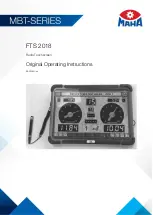
4
General Work Products LLC | 6000 Jefferson Hwy | Harahan, LA 70123
www.PalmerSafetyUS.com
•Fall Protection •Training •Netting •PPE
®
Limits
Fall Clearance:
There should be enough clearance below the anchorage connector to arrest a fall before the person strikes
the ground or an obstacle. When figuring out how far people might fall, there needs to be a safety buffer of 2 feet. People
also need to consider the distance they are slowing down at, how tall they are, the length of their lanyard or SRL. They
should also think about harness stretch and any other factors that apply.
Diagram shown below is a fall clearance calculation EXAMPLE ONLY.
Work Surface
Free Fall Distance
Work Surface
TOTAL FALL CLEARANCE = FREE FALL + DECELE S SAFETY SWING FALL
Harness Stretch
Deceleration Distance
Swing Fall (If Applicable)
Safety Margin
Anchor Point
(Example Only)
Compatibility:
To avoid interference when connecting to the Roof Ridge Anchor, there must be enough space between
the hook and its attachment point. This is known as “rolling out” and can cause the gate on the hook to inadvertently
open and release. All components must be compatible with the Roof Ridge Anchor and must be approved by a Competent
Person. All connectors should be self-closing and self-locking, and should withstand a minimum load of 3,600 lbs.
C.
B.
A.
F
.
E.
D.
A. Two or more connectors should never be attached to a single D-ring.
B. Never attach a connector that could result in a load on its gate.
C. Connectors should not be connected in a false engagement. It should be visually confirmed that the connector
is fully engaged to the anchor point. Avoid conditions that allow for features that protrude from the connectors to
catch on the anchor, giving a false sense of being connected.
D. Connectors should not be connected to each other.
E. Connectors should not be connected directly to the webbing or to the rope lanyard or tie back, unless
specifically allowed by the manufacturer.






























